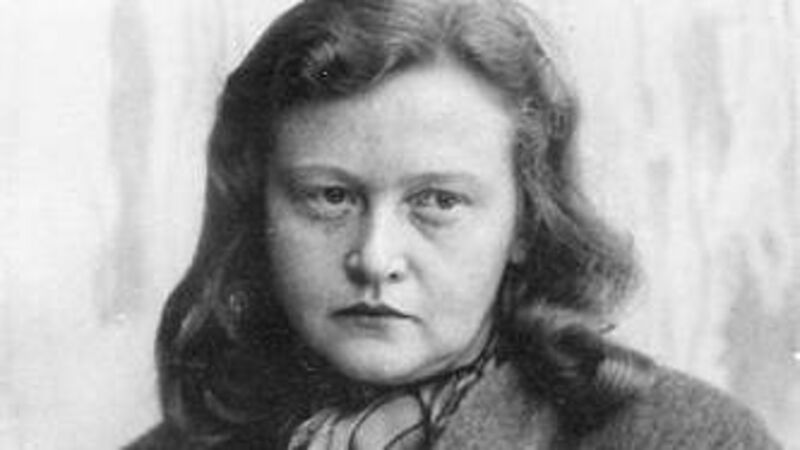Punished not just for war crimes but also for ‘failing’ as a woman

Ilse Koch, wife of Karl Koch who was commandant of the concentration camp at Buchenwald.
WHEN, at the surrender of the Third Reich, General Eisenhower visited Buchenwald concentration camp, he was so stunned he announced that he wanted every American unit to see what he had seen.
“We are told that the American soldier does not know what he is fighting for,” he said. “Now, at least, he will know what he is fighting against.”
Just a week before the Allies liberated Buchenwald, Karl Koch, the former commandant of the camp, was executed for crimes including the murder of an imprisoned medic who had treated him for syphilis, the motivation for the homicide being Koch’s fear the medic might spread the word about the commander’s venereal disease.
What made the execution unusual, was that the firing squad that did for Koch belonged to the SS. Nazis, in other words, not Allied shooters. Koch was so evil that his own finally decided he breached their standards of concentration camp management.
Koch’s widow, Ilse, the mother of their three children, survived him and became known as the Bitch of Buchenwald. She was first tried in a post-war Dachau court and sentenced to four years imprisonment, which was just about right, given that she had no managerial role in Buchenwald and consequently had not directly participated in the mass murder committed there.
However, this was a case where the accusations were louder than the evidence.
The accusations included the claim she had ridden her horse through the camp, flogging anybody who displeased her with a riding whip; selected prisoners for extermination who she believed looked at her inappropriately; and made lampshades from the skin of executed camp inmates, favouring tattooed material. None of those accusations was proven.
Ilse Koch personified everything the post-war world found horrific about Nazi Germany.
Coverage of the Bitch of Buchenwald in American media created enough outrage about the brevity of her sentence as to override jurists who believed it precisely matched her provable crimes.
The outrage did more. It swamped the rule of double jeopardy, which holds that once you’ve been tried and sentenced for an offence, you cannot be tried a second time for the same offence.
The end result was that, as Ilse Koch walked out of prison, smiling, at the end of her incarceration, she didn’t even make it to the street, being re-arrested, charged and tried all over again. This time, she got a life sentence and was to serve 20 years of that sentence before killing herself.
The general reaction was that she had deserved what she got and that her protestations of innocence were ludicrous.
A new book — Ilse Koch on Trial — by Tomas Jardim, would suggest that while she was anti-Semitic, sexually promiscuous, happy to live in luxury outside the camp in a villa decorated with stolen art, and had a personality that invited at best impatience and at worst hatred, her second conviction would be “unsafe” in modern terms.
Some of the case made about her relied on lawyers telling the court about the “inner pleasure” she took in deaths it was claimed she caused. Inner pleasure? This and similar claims were not based on diaries to which she might have confided her feelings. They were pure fantasy. Or perhaps impure fantasies projected by prosecuting males.
One fairminded American lawyer, having reviewed every word spoken in the trial, later wrote that while the accused undoubtedly “was a morally depraved and callous woman not fit company for decent people anywhere…these traits are not of themselves considered crimes in America and are certainly not war crimes in international law”.
But that’s where Jardim’s book should give us pause. The fact is that the Koch war crimes conviction would not stand up in any proper judicial setting and that the woman spent a quarter of a century (between her first and final incarcerations) largely because she failed to live up to the expectations, not only of the male victors, but of her own country.
Jardim lists her being accused of being “avaricious, possessed with boundless arrogance and cruel in a manner which is rarely found in women… always running around with married men... She did not behave ... as was to be expected of a lady."
In the actual court and in the contemporaneous court of mass media, Koch was subjected to relentless sexist stereotyping. Reporters pointed out that while she may have been sexy in the past, she was now frumpy and fat.
The judicial system dragged in her stepsister, Erna Raible, and her former landlady, Maria Klaus to testify that the accused was not even a good mother: she drank a lot when entertaining.
It all played into an apparent confirmation “that she bore a dual guilt as not only a perpetrator of violence and a violator of statutory law, but a strident and grotesque violator of established gender norms…. rendering her, as the US Chief Prosecutor argued, ‘no woman in the usual sense’.”
How Ilse Koch was treated, and why she was treated as she was, is worth examination.
Albert Speer was one of the few Nazis to serve a comparable sentence, although, amazingly, he did not earn a comparable sentence.
Speer, the master of the German war machine for the final three years of the Third Reich and consequently responsible for slave labour in the manufacture of munitions, was sentenced to 20 years.
Koch, who never served the war machine, never helped develop policies or plans, never signed off on Government decisions of any kind, was sentenced to life.
Speer emerged from Spandau prison in 1966, having, from the Nuremberg Trials onward, adhered to the role, as he himself with conscious irony, put it, of “repentant sinner”.
He had used the 20 years of imprisonment to write and smuggle out the diaries that — published — were to affect the resuscitation of his reputation, turning his narrative into an appealing redemption saga. He also rigorously looked after his physical and mental health during the Spandau years.
Chaotic end
Ilse Koch had neither the insight, discipline, nor intellect to take that route. Her years in prison were chaotic, with sporadic hunger strikes and her trashing her cell more than once.
She had none of the narrative-crafting resolution of Speer and, although she was pushed by her lawyers to take the route of contrition, she wouldn’t do it.
The day before she fashioned a noose out of a torn strip of bedsheet and hanged herself from an overhead pipe, she crafted a final letter to her son:
“My lawyer wrote that without an acknowledgement of guilt and a willingness to atone, I cannot be released. It’s all madness, I’m innocent, I’m not to blame, it’s all slander and perjury.”
It wasn’t all slander and perjury. But the contrast between Koch and Speer (whose sexual promiscuity, quite rightly, never surfaced in court) suggests Koch suffered greatly as a result of stereotyped views of women, rather than proven crime on her part.

Unlimited access. Half the price.
Try unlimited access from only €1.50 a week
Already a subscriber? Sign in
CONNECT WITH US TODAY
Be the first to know the latest news and updates











